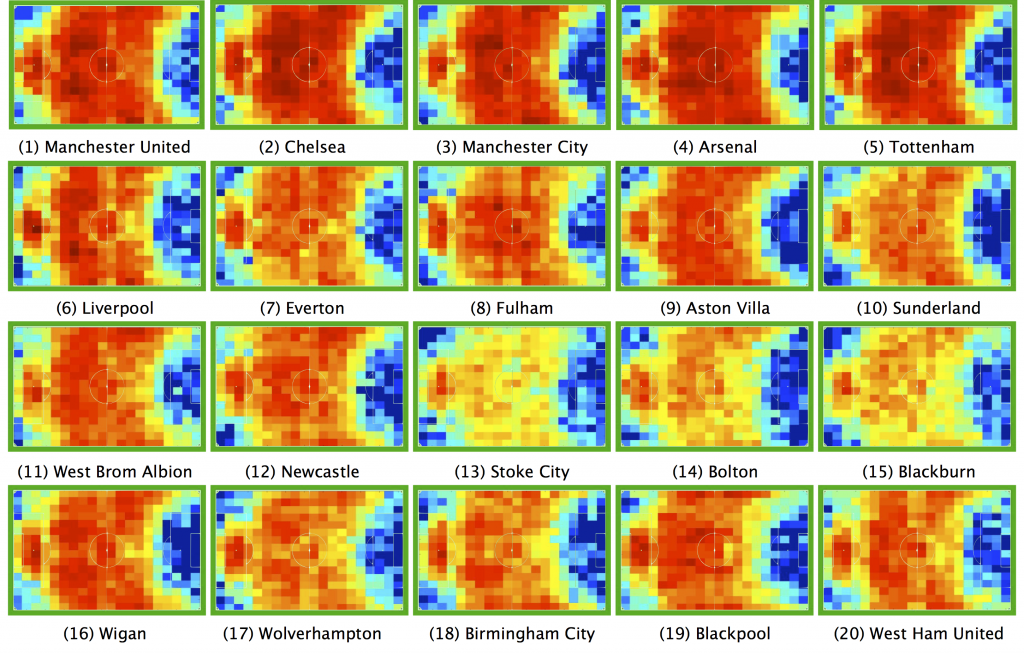Abstract

The Moneyball [14] revolution coincided with a shift in the way professional sporting organizations handle and utilize data in terms of decision making processes. Due to the demand for better sports analytics and the improvement in sensor technology, there has been a plethora of ball and player tracking information generated within professional sports for analytical purposes. However, due to the continuous nature of the data and the lack of associated high-level labels to describe it – this rich set of information has had very limited use especially in the analysis of a team’s tactics and strategy. In this paper, we give an overview of the types of analysis currently performed mostly with hand-labeled event data and highlight the problems associated with the influx of spatiotemporal data. By way of example, we present an approach which uses an entire season of ball tracking data from the English Premier League (2010-2011 season) to reinforce the common held belief that teams should aim to “win home games and draw away ones.” We do this by i) forming a representation of team behavior by chunking the incoming spatiotemporal signal into a series of quantized bins, and ii) generate an expectation model of team behavior based on a code-book of past performances. We show that home advantage in soccer is partly due to the conservative strategy of the away team. We also show that our approach can flag anomalous team behavior which has many potential applications.
Copyright Notice
The documents contained in these directories are included by the contributing authors as a means to ensure timely dissemination of scholarly and technical work on a non-commercial basis. Copyright and all rights therein are maintained by the authors or by other copyright holders, notwithstanding that they have offered their works here electronically. It is understood that all persons copying this information will adhere to the terms and constraints invoked by each author’s copyright. These works may not be reposted without the explicit permission of the copyright holder.